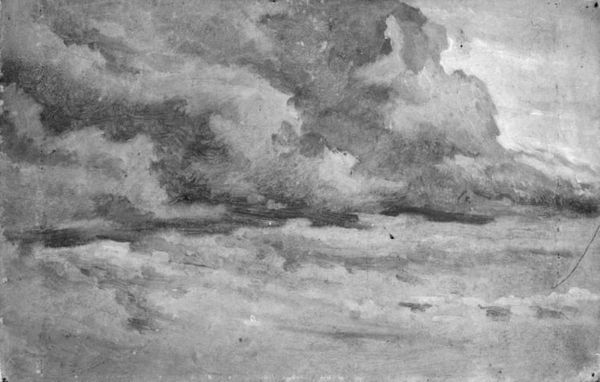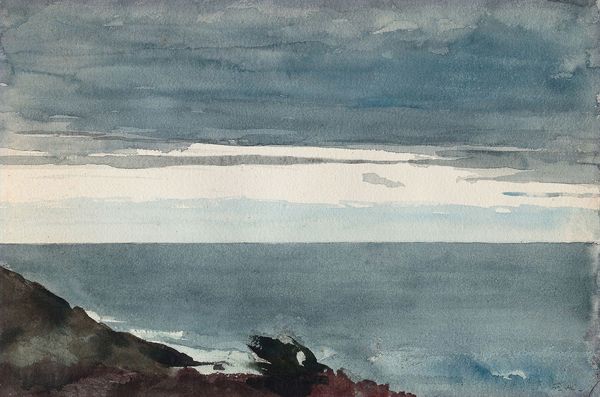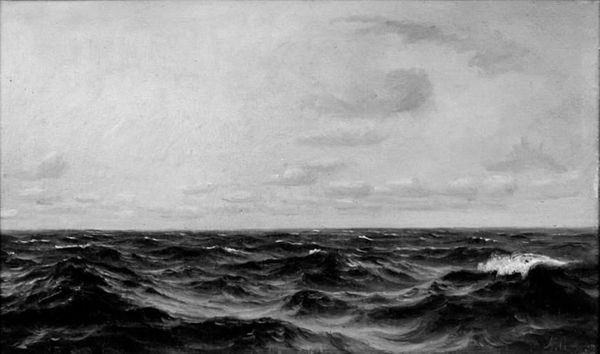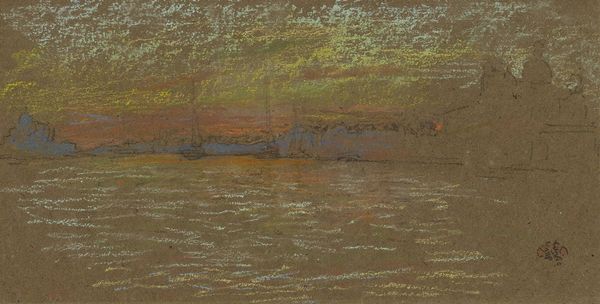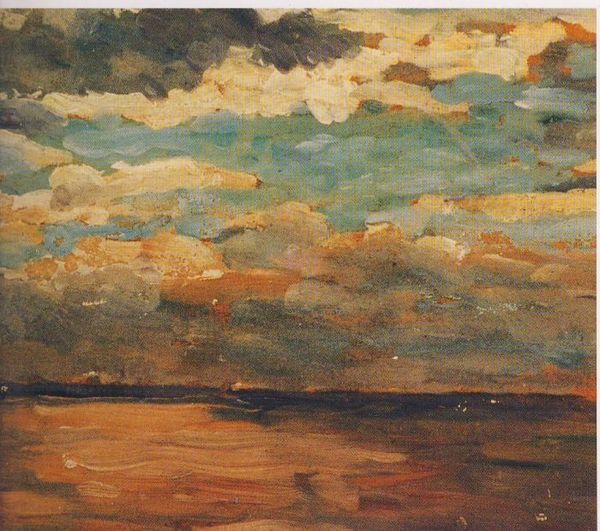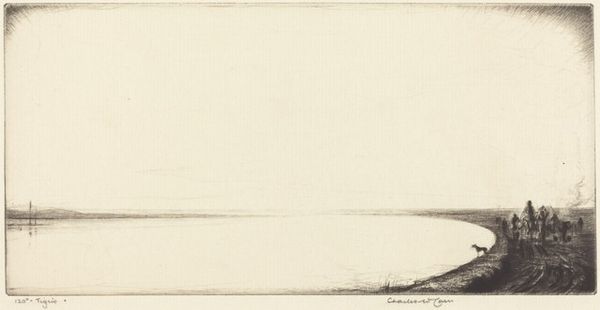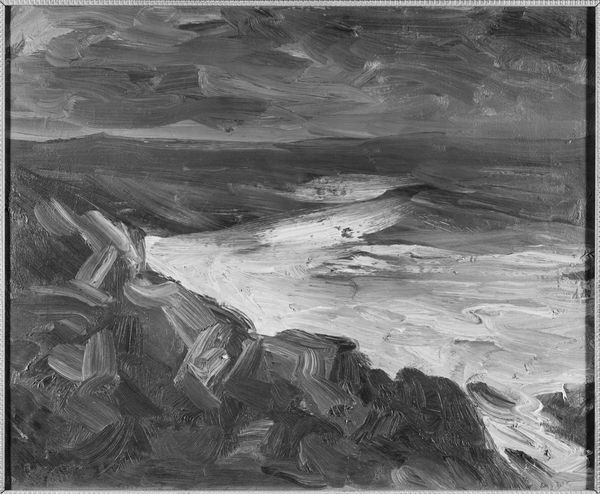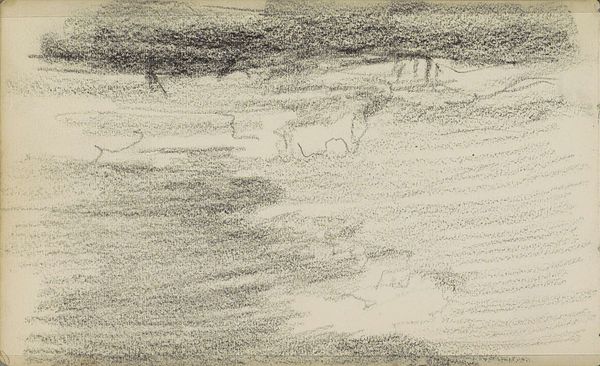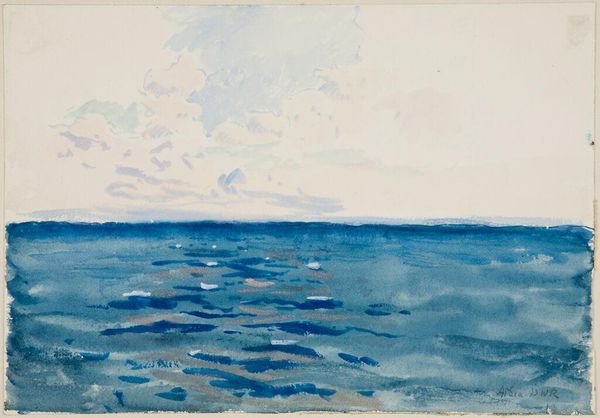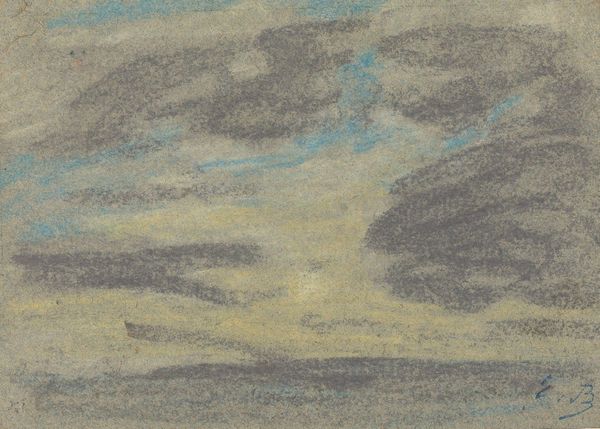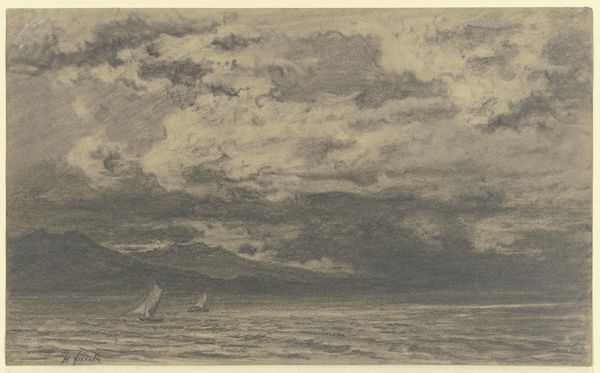
painting, plein-air, oil-paint, impasto
#
abstract expressionism
#
organic
#
painting
#
organic shape
#
plein-air
#
oil-paint
#
landscape
#
nature
#
impasto
#
romanticism
#
abstract-art
#
abstract art
#
sea
Copyright: Winston Churchill,Fair Use
Editor: So, this is "Seascape with Conical Buoy," an oil painting, artist and date are unknown, sadly. I'm really struck by the sky - it looks so turbulent. What do you see in this piece? Curator: Beyond the immediate impression of the landscape, I think it's critical to unpack what this seascape, particularly painted during a period of vast imperial expansion and maritime power, might represent. Consider the buoy, a symbol of guidance and safety, yet also of boundaries and control within a space—the sea—that's historically been both a source of life and a site of conflict. What social structures are mirrored in the rendering of this seascape? Editor: That’s interesting. I hadn’t thought about it in terms of power dynamics. It just seemed like a fairly straightforward landscape to me. But thinking about boundaries in connection to a buoy… Curator: Exactly. And what does it mean to paint this scene "en plein air?" The artist places themselves directly within this context, influenced by it, recording it, possibly complicit in it. The sea itself could be seen as a contested space, a fluid border subject to various power struggles. How can we see gender or race in this depiction, or rather, its absence? Who is omitted from this "natural" scene, and why? Editor: So, by looking at what's *not* there, we can get a clearer understanding of the work’s broader context. Curator: Precisely. It is about recognizing what perspectives have been traditionally prioritized and normalized and what perspectives have been marginalized and omitted, and then examining our own position in relationship to all that. What does this impasto technique suggest about the artist’s physical and emotional engagement? Does it suggest the artist wants to ground their artistic efforts in physical work and observation, or more likely, to signal to his upper class peers, their capacity for leisure, and to dominate “nature”? Editor: I never would have considered all those aspects, but this definitely gives me a lot to think about when approaching landscapes in the future! Curator: Yes, context transforms everything, so every act of creation needs that frame of consideration.
Comments
No comments
Be the first to comment and join the conversation on the ultimate creative platform.
